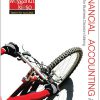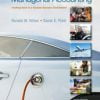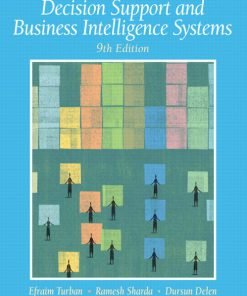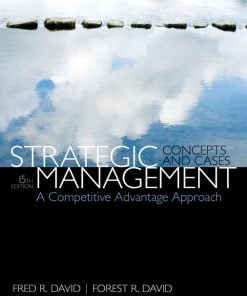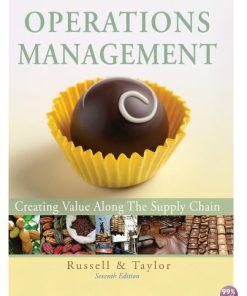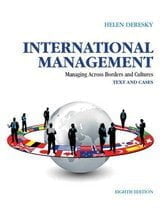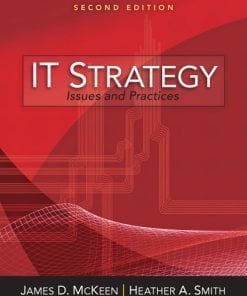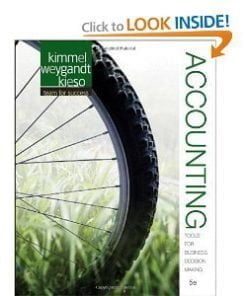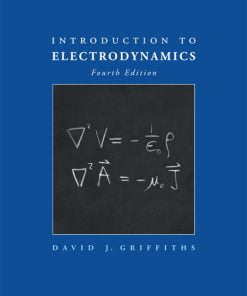Solution Manual for Calculus: Early Transcendentals, 9th Edition, James Stewart Daniel K. Clegg Saleem Watson
$35.00 Original price was: $35.00.$26.50Current price is: $26.50.
Solution Manual for Calculus: Early Transcendentals, 9th Edition, James Stewart, Daniel K. Clegg, Saleem Watson
Instant download Solution Manual for Calculus: Early Transcendentals, 9th Edition, James Stewart, Daniel K. Clegg, Saleem Watson pdf docx epub after payment.
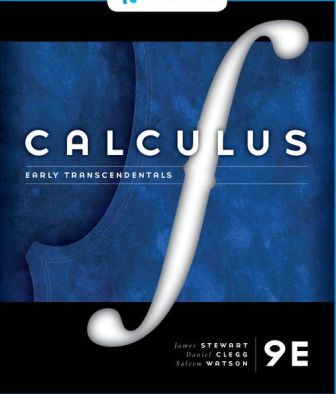
Product details:
- ISBN-10 : 1337613924
- ISBN-13 : 978-1337613927
- Author: James Stewart
CALCULUS: EARLY TRANSCENDENTALS, 9th Edition, provides you with the strongest foundation for a STEM future. James Stewart’s Calculus series is the top-seller in the world because of its problem-solving focus, mathematical precision and accuracy, and outstanding examples and problem sets. Selected and mentored by Stewart, coauthors Daniel Clegg and Saleem Watson continue his legacy, and their careful refinements retain Stewart’s clarity of exposition and make the 9th Edition an even more usable learning tool. The accompanying WebAssign includes helpful learning support and new resources like Explore It interactive learning modules. Showing that Calculus is both practical and beautiful, the Stewart approach and WebAssign resources enhance understanding and build confidence for millions of students worldwide.
Table of contents:
Preface. To the Student. Diagnostic Tests. A Preview of Calculus. 1. FUNCTIONS AND MODELS. Four Ways to Represent a Function. Mathematical Models: A Catalog of Essential Functions. New Functions from Old Functions. Exponential Functions. Inverse Functions and Logarithms. Review. Principles of Problem Solving. 2. LIMITS AND DERIVATIVES. The Tangent and Velocity Problems.The Limit of a Function.Calculating Limits Using the Limit Laws. The Precise Definition of a Limit. Continuity. Limits at Infinity; Horizontal Asymptotes. Derivatives and Rates of Change. Writing Project: Early Methods for Finding Tangents.The Derivative as a Function. Review. Problems Plus. 3. DIFFERENTIATION RULES. Derivatives of Polynomials and Exponential Functions. Applied Project: Building a Better Roller Coaster. The Product and Quotient Rules. Derivatives of Trigonometric Functions. The Chain Rule. Applied Project: Where Should a Pilot Start Descent? Implicit Differentiation. Laboratory Project: Families of Implicit Curves. Derivatives of Logarithmic Functions. Rates of Change in the Natural and Social Sciences. Exponential Growth and Decay. Applied Project: Controlling Red Blood Cell Loss During Surgery. Related Rates. Linear Approximations and Differentials. Laboratory Project: Taylor Polynomials. Hyperbolic Functions. Review. Problems Plus. 4. APPLICATIONS OF DIFFERENTIATION. Maximum and Minimum Values. Applied Project: The Calculus of Rainbows. The Mean Value Theorem. How Derivatives Affect the Shape of a Graph. Indeterminate Forms and l’Hospital’s Rule. Writing Project: The Origins of l’Hospital’s Rule. Summary of Curve Sketching. Graphing with Calculus and Calculators. Optimization Problems. Applied Project: The Shape of a Can. Applied Project: Planes and Birds: Minimizing Energy. Newton’s Method. Antiderivatives. Review. Problems Plus. 5. INTEGRALS. Areas and Distances. The Definite Integral. Discovery Project: Area Functions. The Fundamental Theorem of Calculus. Indefinite Integrals and the Net Change Theorem. Writing Project: Newton, Leibniz, and the Invention of Calculus. The Substitution Rule. Review. Problems Plus. 6. APPLICATIONS OF INTEGRATION. Areas Between Curves. Applied Project: The Gini Index. Volume. Volumes by Cylindrical Shells. Work. Average Value of a Function. Applied Project: Calculus and Baseball. Applied Project: Where to Sit at the Movies. Review. Problems Plus. 7. TECHNIQUES OF INTEGRATION. Integration by Parts. Trigonometric Integrals. Trigonometric Substitution. Integration of Rational Functions by Partial Fractions. Strategy for Integration. Integration Using Tables and Computer Algebra Systems. Discovery Project: Patterns in Integrals. Approximate Integration. Improper Integrals. Review. Problems Plus. 8. FURTHER APPLICATIONS OF INTEGRATION. Arc Length. Discovery Project: Arc Length Contest. Area of a Surface of Revolution. Discovery Project: Rotating on a Slant. Applications to Physics and Engineering. Discovery Project: Complementary Coffee Cups. Applications to Economics and Biology. Probability. Review. Problems Plus. 9. DIFFERENTIAL EQUATIONS. Modeling with Differential Equations. Direction Fields and Euler’s Method. Separable Equations. Applied Project: How Fast Does a Tank Drain? Applied Project: Which is Faster, Going Up or Coming Down? Models for Population Growth. Linear Equations. Predator-Prey Systems. Review. Problems Plus. 10. PARAMETRIC EQUATIONS AND POLAR COORDINATES. Curves Defined by Parametric Equations. Laboratory Project: Families of Hypocycloids. Calculus with Parametric Curves. Laboratory Project: Bezier Curves. Polar Coordinates. Laboratory Project: Families of Polar Curves. Areas and Lengths in Polar Coordinates. Conic Sections. Conic Sections in Polar Coordinates. Review. Problems Plus. 11. INFINITE SEQUENCES AND SERIES. Sequences. Laboratory Project: Logistic Sequences. Series. The Integral Test and Estimates of Sums. The Comparison Tests. Alternating Series. Absolute Convergence and the Ratio and Root Tests. Strategy for Testing Series. Power Series. Representations of Functions as Power Series. Taylor and Maclaurin Series. Laboratory Project: An Elusive Limit. Writing Project: How Newton Discovered the Binomial Series. Applications of Taylor Polynomials. Applied Project: Radiation from the Stars. Review. Problems Plus. 12. VECTORS AND THE GEOMETRY OF SPACE. Three-Dimensional Coordinate Systems. Vectors. The Dot Product. The Cross Product. Discovery Project: The Geometry of a Tetrahedron. Equations of Lines and Planes. Cylinders and Quadric Surfaces. Review. Problems Plus. 13. VECTOR FUNCTIONS. Vector Functions and Space Curves. Derivatives and Integrals of Vector Functions. Arc Length and Curvature. Motion in Space: Velocity and Acceleration. Applied Project: Kepler’s Laws. Review. Problems Plus. 14. PARTIAL DERIVATIVES. Functions of Several Variables. Limits and Continuity. Partial Derivatives. Tangent Planes and Linear Approximation. Applied Project: The Speedo LZR Race Suit. The Chain Rule. Directional Derivatives and the Gradient Vector. Maximum and Minimum Values. Applied Project: Designing a Dumpster. Discovery Project: Quadratic Approximations and Critical Points. Lagrange Multipliers. Applied Project: Rocket Science. Applied Project: Hydro-Turbine Optimization. Review. Problems Plus. 15. MULTIPLE INTEGRALS. Double Integrals over Rectangles. Double Integrals over General Regions. Double Integrals in Polar Coordinates. Applications of Double Integrals. Surface Area. Triple Integrals. Discovery Project: Volumes of Hyperspheres. Triple Integrals in Cylindrical Coordinates. Discovery Project: The Intersection of Three Cylinders. Triple Integrals in Spherical Coordinates. Applied Project: Roller Derby. Change of Variables in Multiple Integrals. Review. Problems Plus. 16. VECTOR CALCULUS. Vector Fields. Line Integrals. The Fundamental Theorem for Line Integrals. Green’s Theorem. Curl and Divergence. Parametric Surfaces and Their Areas. Surface Integrals. Stokes’ Theorem. Writing Project: Three Men and Two Theorems. The Divergence Theorem. Summary. Review. Problems Plus. 17. SECOND-ORDER DIFFERENTIAL EQUATIONS. Second-Order Linear Equations. Nonhomogeneous Linear Equations. Applications of Second-Order Differential Equations. Series Solutions. Review. Problems Plus. APPENDIXES. A Numbers, Inequalities, and Absolute Values. B Coordinate Geometry and Lines. C Graphs of Second-Degree Equations. D Trigonometry. E Sigma Notation. F Proofs of Theorems. G The Logarithm Defined as an Integral. H Complex Numbers. I Answers to Odd-Numbered Exercises. INDEX.
People also search:
calculus early transcendentals vs calculus
can you take trig and calculus at the same time
calculus early transcendentals for scientists and engineers
calculus early transcendentals vs late transcendentals
calculus with early transcendental functions
Related products
Solution Manual
Solution Manual
Solution Manual
Solution Manual
Solution Manual
Solution manual for Accounting: Tools for Business Decision Making Kimmel Weygandt Kieso 5th Edition
Solution Manual
Solution Manual for Introduction to Electrodynamics, 4/E 4th


